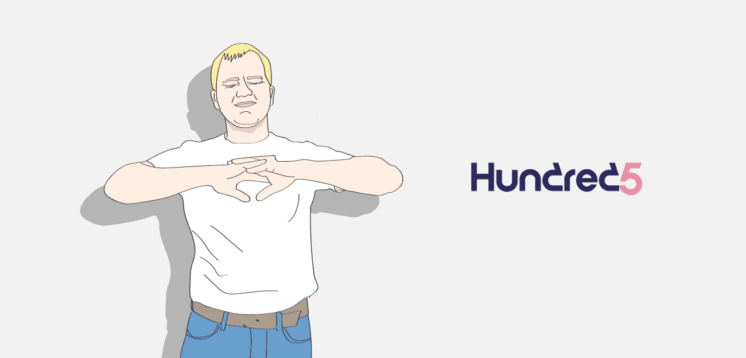Good help is hard to find. Unless you’re talking about an employee referral program. Your employees can help your team save time and decrease hiring costs in the recruitment process, if they’re rewarded with things they love.
Let’s explore how to keep them engaged and flooding the referral funnel with qualified candidates.
TL;DR — Key Takeaways
- What are employee referral programs? They’re a creative component in your recruiting strategy that gets your employees doing the recruiting for you by referring good-fit candidates they know.
- What makes a good employee referral program? Structure and fun are core components. Read on to learn more.
- What are the benefits of referral programs? Along with saving the recruitment team time and reducing hiring costs, referral programs can also create a more close-knit company culture and boost productivity.
- In it for the employee referral program ideas? No problem! Along with offering experiential rewards and supporting a cause employees are passionate about, we share 1o extra ideas to kick-start your employee referral program.
- Last but not least… while you’re streamlining the interview process for a referred candidate, don’t make the mistake of skipping the competency test step. Although referred candidates tend to be of higher quality, your notion of a best-fit person for the job might differ dramatically from that of the referring employee. Use gamified skills assessments to keep the balance between fast and reliable!
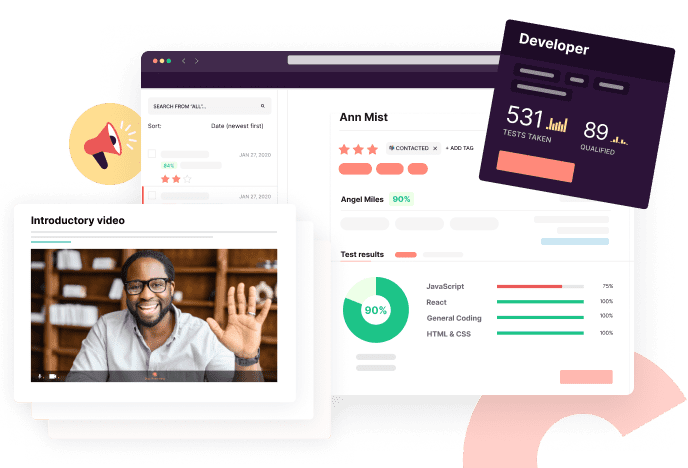
In simple words, what’s an employee referral program?
An employee referral program is a method of recruiting new employees by getting qualified candidates referred by current employees. Basically, you’re roping current employees into your hiring process by rewarding them for referring quality candidates they know.
Referral rewards can include anything from an employee referral bonus to vacation days or a snowboarding lesson.
3 Types of referral programs
Employers considering implementing an employee referral program have to decide whether they want to incentivize their staff based on the quantity or quality of the referred candidates. Or a bit of both!
Employee referrals are the single most important thing we do in recruiting. It is the number one single source of what a good hire looks like.
Steve Klingensmith Recruiting Manager at Booking.com | Source
Here’s a quick overview of the three different types of tiered employee referral programs and their pros and cons.
| Type of Referral Program | How it Works | Benefits | Potential Drawbacks |
|---|---|---|---|
| Volume-Based Referral Program | Employees are rewarded based on the number of people they refer to the company, regardless of whether those referrals get hired. | Encourages a high quantity of referrals, potentially increasing the pool of candidates. | May lead to a large number of unqualified candidates if employees are incentivized to refer as many people as possible, regardless of fit. |
| Quality-Based Referral Program | Employees are rewarded when their referrals are hired and stay with the company for a certain period of time. | Encourages employees to refer high-quality candidates who are likely to be a good fit for the company. | May lead to fewer total referrals, as employees are incentivized to only refer people they believe will be hired and stay at the company. |
| Hybrid Referral Program | Employees receive a smaller reward for each referral and a larger reward when a referral is hired and stays with the company for a certain period. | Due to the complexity of the rewards structure may require more resources to administer. | May require more resources to administer due to the complexity of the rewards structure. |
What makes a good employee referral program?
A good employee referral program brings in lots of quality referral candidates. And it achieves the best results by:
- Rewarding employees with things they actually want, like a spa voucher or a mountain biking holiday.
- Using a structured or tiered approach to referrals that recognizes and rewards top participants.
- Gamifying the employee referral program through referral software.
- Making employee referrals part of the company culture.
How does a regular employee referral program work?
Ok, so your team wants to get employees to both refer qualified candidates to good candidates they know. But what’s the best approach to make this all happen smoothly? Consider these tips to help your team create a successful referral program:
- Decide when you need referrals. You may not need referrals for every type of open role.
- Promote your program to your employees. If you don’t remind them it’s there, and what’s in it for them (most importantly 😉), they’re not gonna do the work.
- Offer a tiered rewards approach that generously rewards those who find gems for hard-to-fill roles or bring in many qualified candidates.
- Think beyond the good old cash bonus. More and more employees value fun experiences like a fencing class!
- Use technology to automate and expand the reach of your program to save your team time and make it easier for employees to help you out.
What are the benefits of creating a referral program?
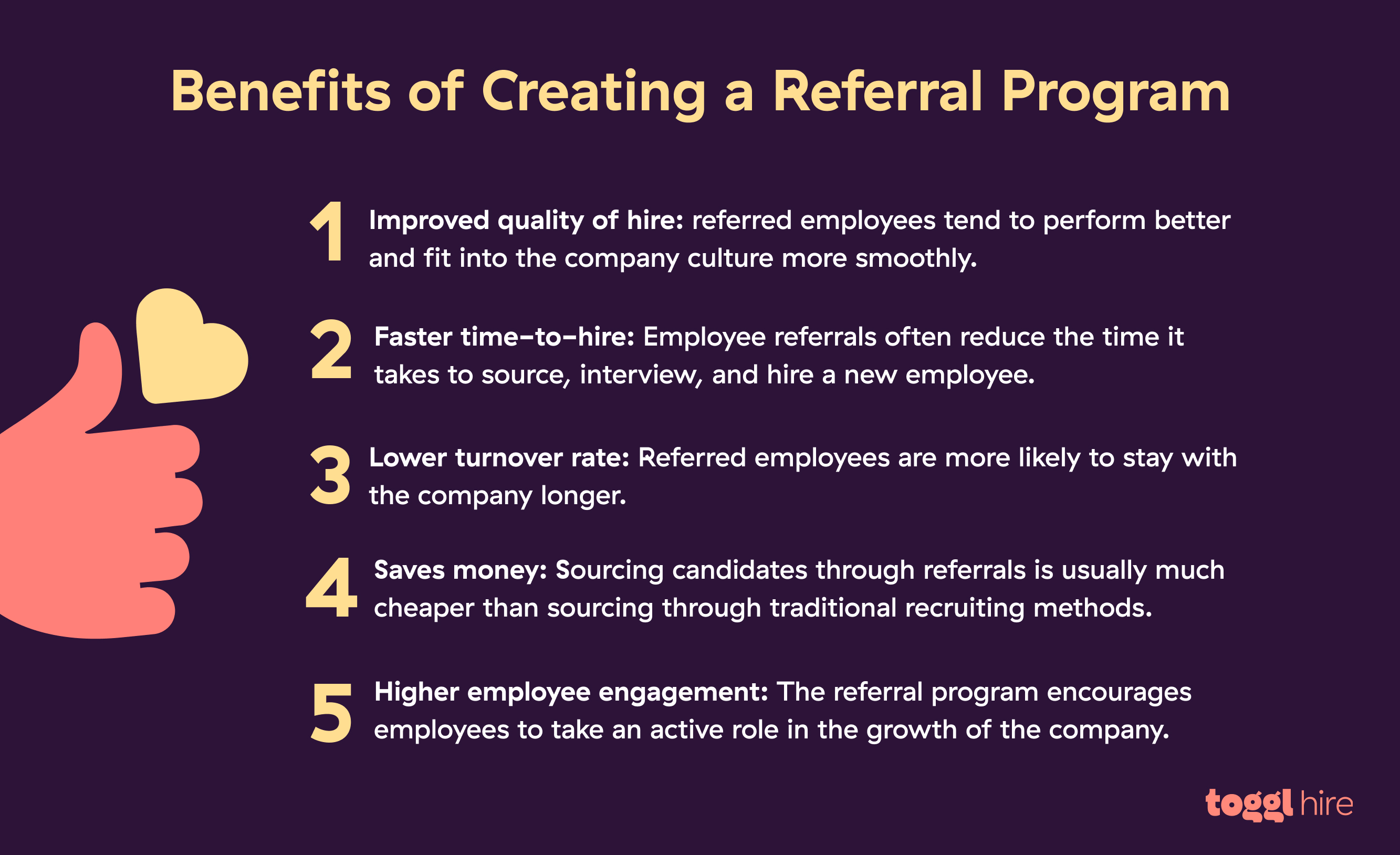
Employee referral programs feed into and amplify the HR team’s talent acquisition efforts. In other words, it’s a program that helps employers bring in qualified candidates without the same costs you’d expect through advertising open roles. Plus, you may also reap benefits like:
- A faster time to hire as no recruitment marketing phase is needed. (Referrals can be up to 4 x more likely to land a role than website applicants.)
- Reduced hiring costs as no role advertising necessary. (Can be up to $1,000 less than other hiring methods.)
- Acquiring rare top talent that could otherwise have been snapped up by another company. (88% of employers feel that referrals are stellar candidates.)
- A sense of team camaraderie, and improved retention rates, especially if the new hire works on the same team as the referring employee. (Referral hires can stay up to 70% longer than other hires.)
- Enhancing the company culture as employees will more likely recommend candidates they know would be a good fit. (Up to 70% of organizations believe referrals make the best culture fit.)
- Potentially reducing onboarding efforts if the new hires know a bit about the company already.
- Powering up your employer brand by growing your community.
Now let’s get into the juicy stuff.
12 reliable employee referral program ideas
If you’ve been thinking about creating your own employee referral program but don’t know how to get started, we’ve prepared a few ideas to help you get in motion.
1. External referrals
Your employees aren’t the only ones who will recommend great candidates for a position. External people may also refer candidates they know to your company.
HR leaders should partner with their marketing and communications teams to brand the employee referrals program both internally and externally.
Adam Fitzer, Talent Acquisition Leader at West Monroe. Source
Why does it work?
For successful hires, you can award referrers who don’t work with your company with cash prizes or a product/service you are selling.
In the real world
Sometimes, your employer brand ambassadors might not even work at your company! Former employees, partners, or social media followers might hold your company in high regard and use the opportunity to send great candidates your way – if you let them. Calendly uses an external referral program to source candidates for hard-to-fill jobs.
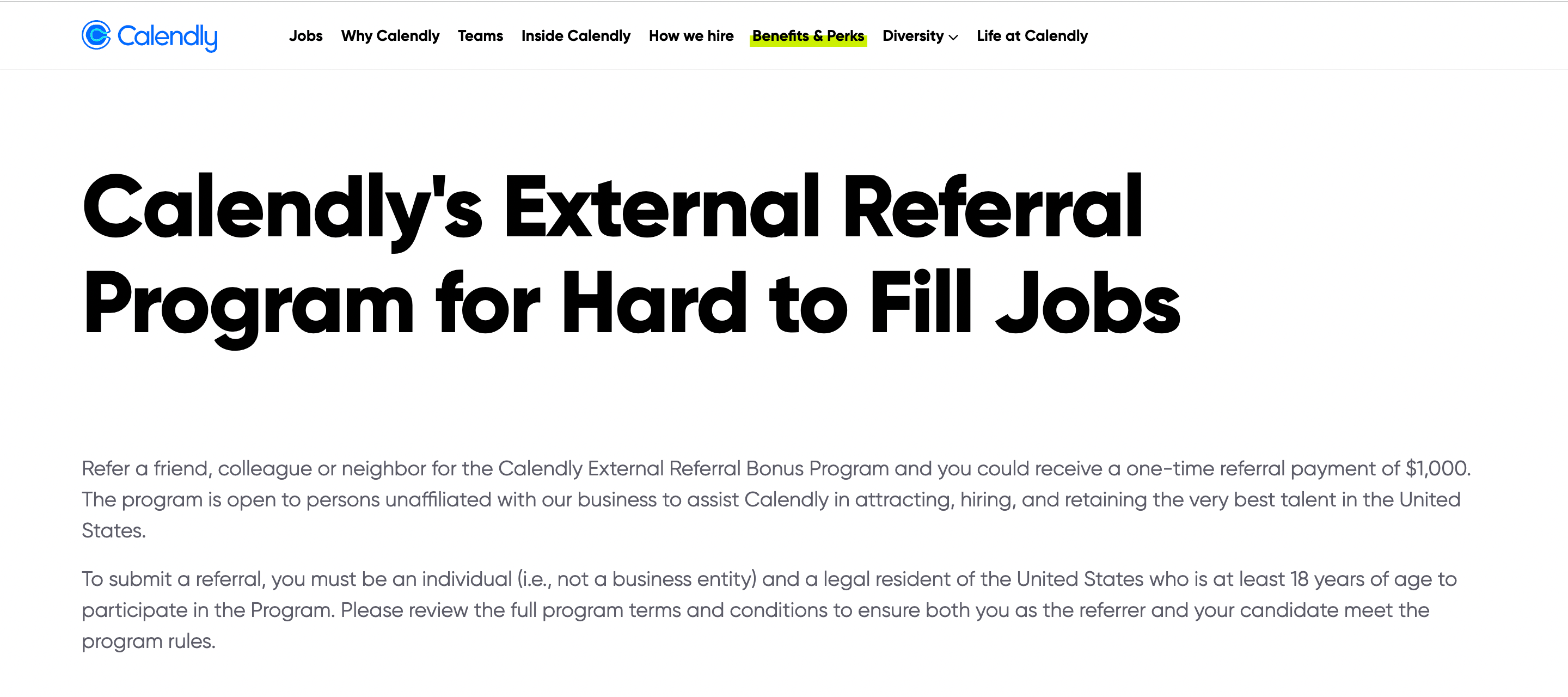
2. Get a good tagline
A good tagline for employee referral programs, like ‘refer and earn’ can motivate your employees to get cracking with referrals.
Why does it work?
You can inspire employees to take action by using finance-driven taglines like ‘Earn up to $1000 for referring an employee’. Or by appealing to their caring side, such as ‘Friends make the best co-workers’.
In the real world
Here’s a great example of a tagline that supports diversity in the tech space:

Need more tagline inspo? Here are some great ones.
3. Create a tiered employee referral program
Just having an employee referral bonus program is great, but why not take it a step further and reward those that refer more qualified candidates or more significant rewards for candidates further along the referral process?
Why does it work?
Depending on whether you incentivize based on the number of qualified referrals or new employees hired through internal referrals, you could reward each tier with better incentives, such as:
- Tier 1 (on qualified application): $100 plus company swag like a mug or t-shirt
- Tier 2 (on interview): $150 or an extra day off
- Tier 3 (on hire): A chance to win a trip to Hawaii
- Tier 4 (on retained hire in 1 year): experiential gift voucher
4. Experiential rewards
While cash incentives for successful hires are the most common rewards in employee referral programs, many employees prefer an experience like an Italian pasta-making class or a glass-blowing workshop.
Why does it work?
You can give your top-referring employees experiential gifts they’ll never forget, such as wine tasting, cooking lessons, concert tickets, skydiving, or a kayaking trip.
In the real world

One US software company, Guidewire, that rewarded employees with an unforgettable experience month saw a 360% increase in their total referrals and a 41% increase in the number of new hires by referral. Nice!
5. Reward each stage of the referral program
If you’re going to give financial rewards for your top referrals, don’t wait to give them one big payment after the person’s stuck it out for three months. Rather spread out the rewards to cover each step of the referral program.
Why does it work?
While one big reward is a great way to inspire people to act, a collection of incentives for each stage will keep them fired up and keep them referring. For instance, a lunch voucher or €20 gift card immediately after the referral could encourage people to continue scouting for talent!
6. Fund a cause the employee supports
Another way to reward employees is to support a charity or cause of their choice, such as the World Wide Fund for Nature, Doctors Without Borders, or the Red Cross.
Why does it work?
One way is for employees to choose to donate a portion of their reward to a charity, and the company matches that donation.
In the real world
For example, Toggl Plan was recently hiring for a Growth position and used Toggl Hire to test applicants’ on-the-job skills. They pledged to plant a tree for each applicant that passed the test, turning a standard hiring campaign into an environmentally friendly one.
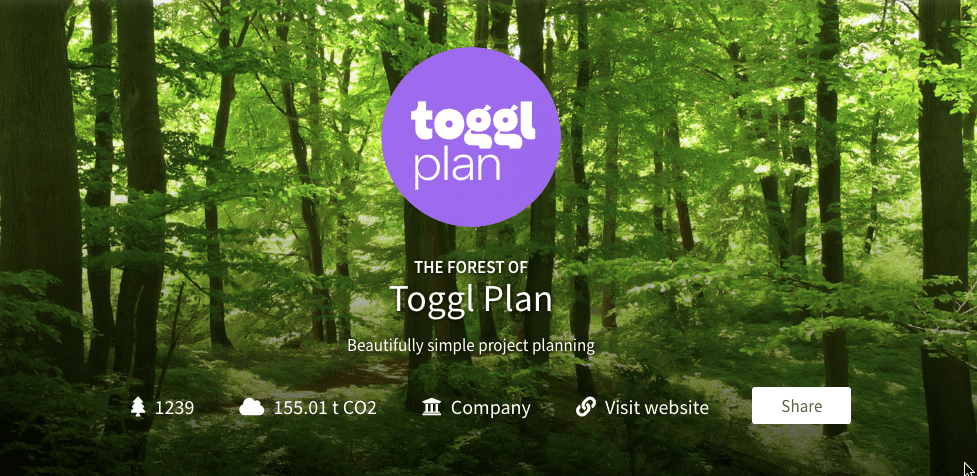
7. Tailor the reward according to the employee’s needs
It’s possible that not everyone will want a kayaking trip as a reward. So the best way to encourage your employees to refer a great hire is to try to give them what they really want, such as a VR headset or the latest trendy gadgets.
Why does it work?
While this is the most attractive option for employees, it can be the hardest one to get right. Your team may need to survey and identify those that are keen to help out to determine what they’d value as a reward.
In the real world
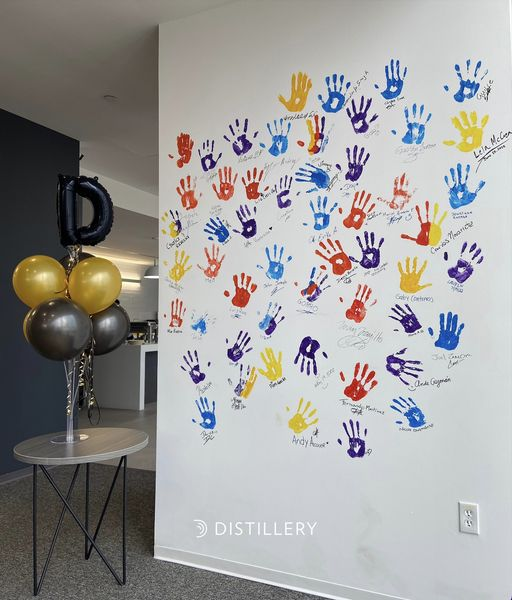
Distillery, a software company, rewards their employees for good referrals with cool tech gadgets like Apple watches and iPhones.
8. Sponsor a lunch
What better welcome for the new hire into your company than sharing a meal with a friend of the person who referred them?
Why does it work?
You can sponsor the meal and use it as a unique opportunity for the referrer to introduce the new hire to the company culture and atmosphere.
In the real world

In a similar light, Booking.com needed more Portuguese-speaking representatives. So they bought a Portuguese lunch for the office, leaving behind referral cards to get input from their employees.
9. Give days off as a referral bonus
If there’s one thing that your employees will appreciate besides money and gifts, it’s time off from the daily grind.
Why does it work?
Reward them with time off to show you value their help in bringing in new talent. And allow them time to rest and recoup their energy levels.
In the real world
A recent SHRM survey revealed that 89% of workers have experienced occupational burnout. Companies should focus on rewards like these that positively affect their workforce’s mental and physical wellness.
10. Use technology to do more
Try out referral software to automate and support your strategy.
Why it works
If you keep reminding employees about referrals and make the process super easy for them to participate, it’ll be a win-win all around. For instance, use referral links to get the info you need from them easily.
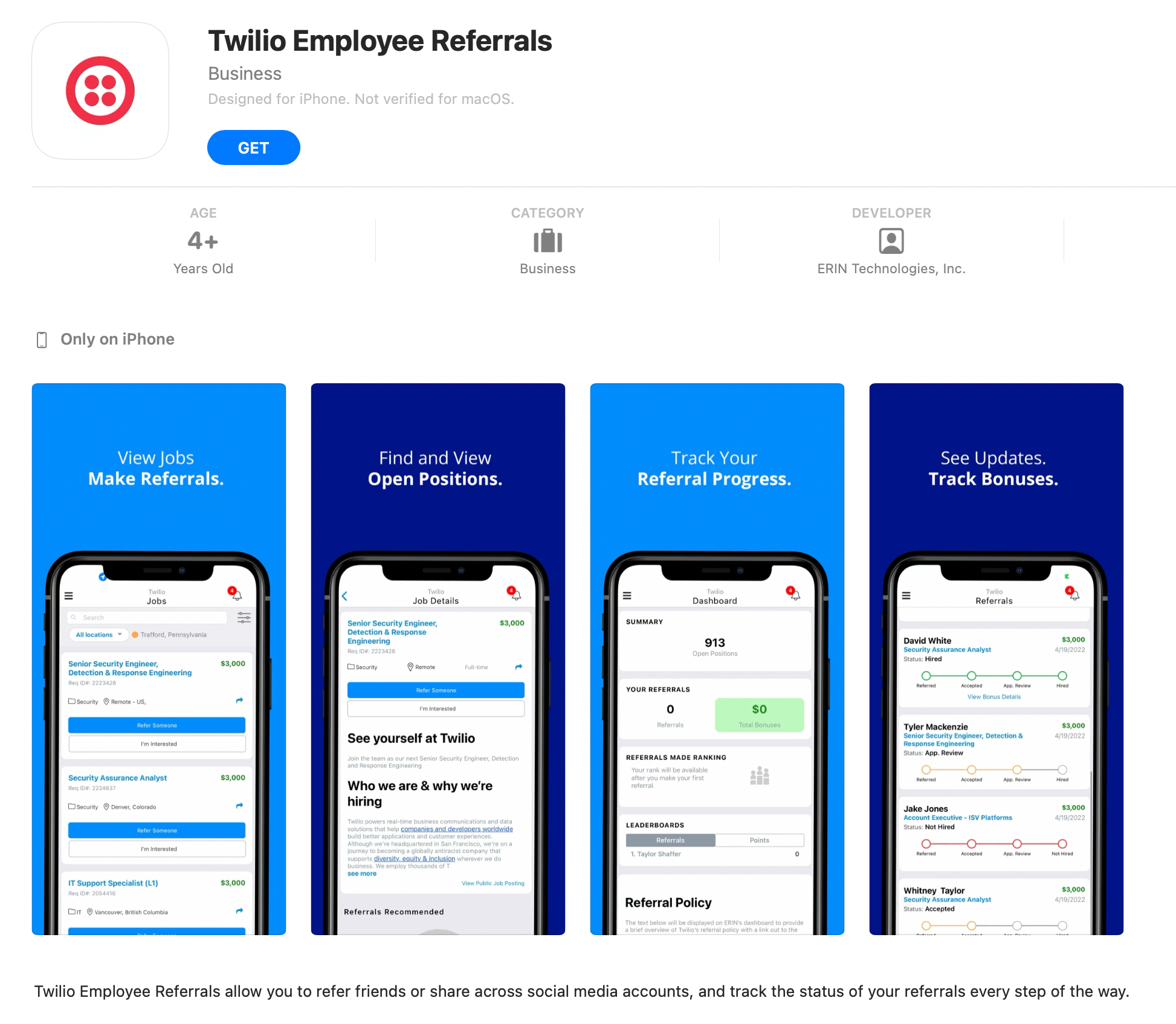
In the real world
Innovative companies, like Nord Security, are even leveraging technology to create targeted LinkedIn ads and extend the network reach of their employee referral program to all brand supporters.
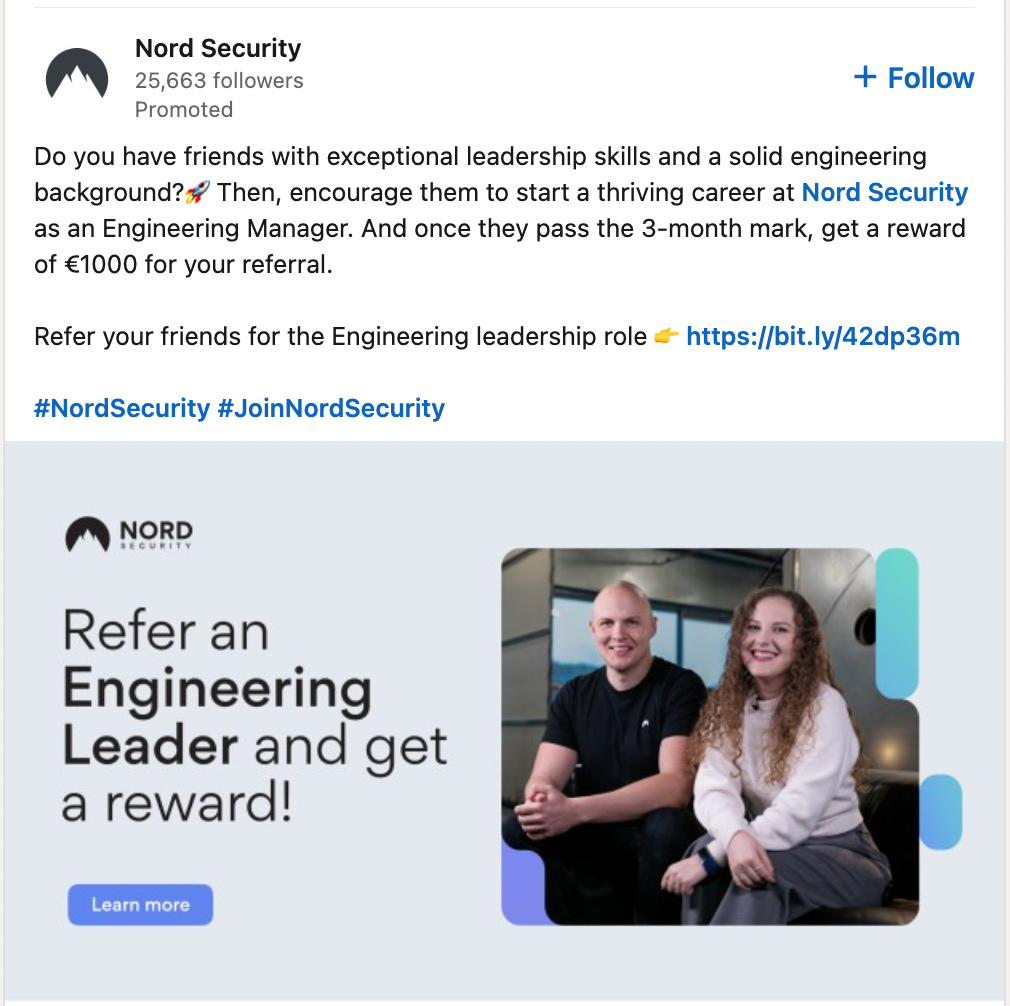
11. Happy Hours
Why not organize recruitment happy hours for your organization? This kind of informal gathering presents a great opportunity for potential candidates to engage with current employees in a fun, relaxed way.
Why it works
This is an excellent idea because candidates learn more about the company and the people working there in a non-stressful environment. And at the same time, HR can get a better idea of what makes these candidates tick.
In the real world
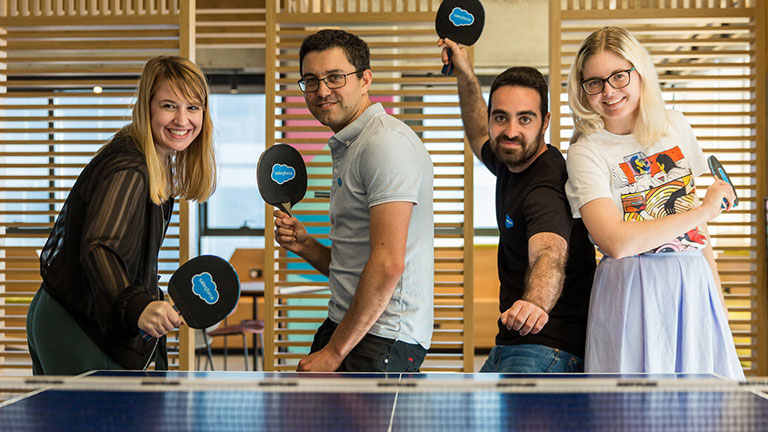
Salesforce are known for these type of happy hour events that help them attract and retain top talent.
12. Passion project support
Many of your current employees have interests and hobbies outside of work (yes, this is a real thing 😆), like playing guitar, origami, writing a novel, or exploring their family genealogy. So why not reward those that support your referral program by supporting their passion project?
Why it works
You could reward them by providing financial support for their hobby or time off to specifically pursue those goals. Not only will they come back invigorated, but they will also be more motivated to do their best at work.
Flexibility with support — both social and financial — to allow people to carve out a place for out-of-work passions in their lives can make your workplace more appealing to attract employees, and healthier to retain them.
HBR
In the real world
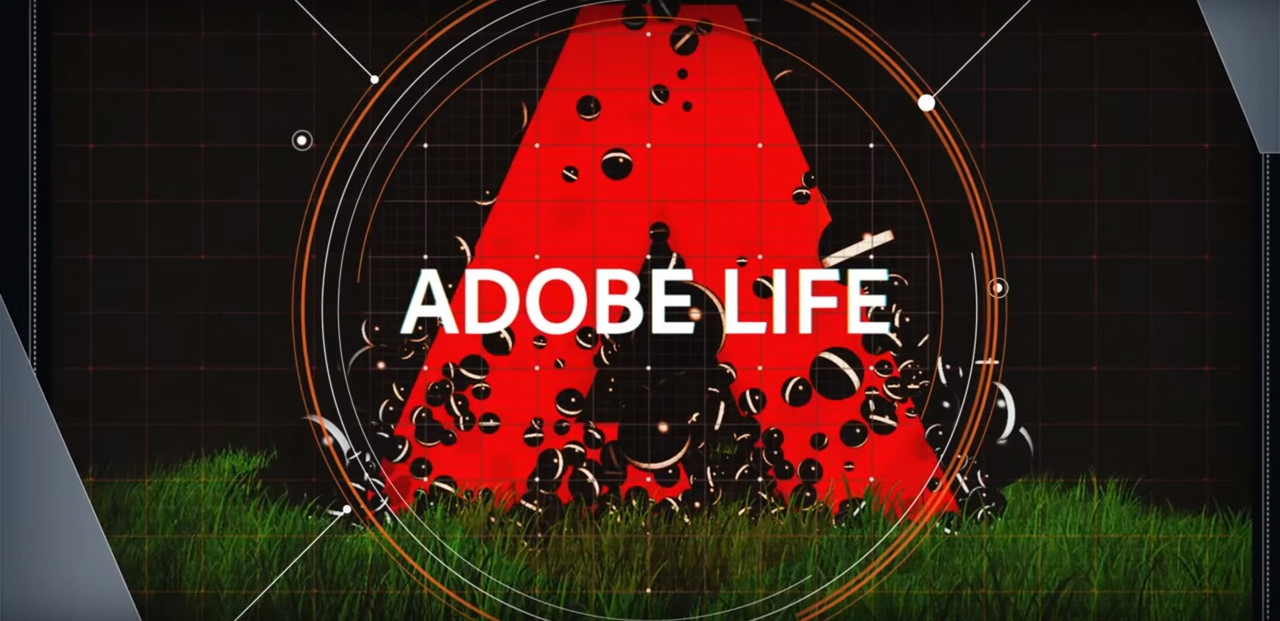
Adobe, for example, offers their employees paid time off to “finally write that novel” or whatever their personal goals entail.
That’s a wrap
Employee referral programs may sound like a lot of work, but you can adapt them to a model that works for your company. While there is no one-size-fits-all solution, make sure you reward the employees — that help you rope in high-quality candidates — with cool stuff that makes them happy and eager to carry on referring.
What can your organization offer your employees beyond traditional employee referral bonuses and recognition?
Juste loves investigating through writing. A copywriter by trade, she spent the last ten years in startups, telling stories and building marketing teams. She works at Toggl Hire and writes about how businesses can recruit really great people.




